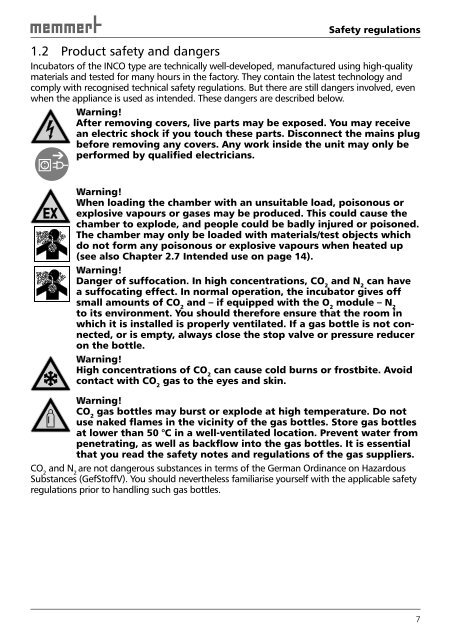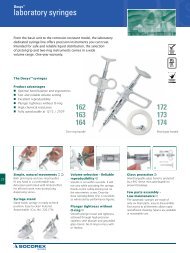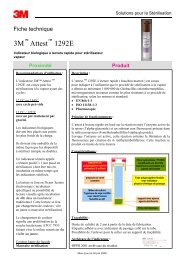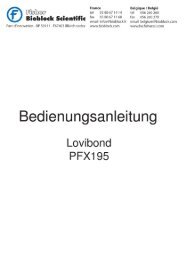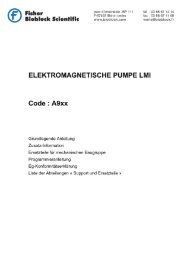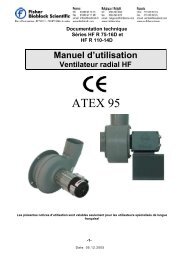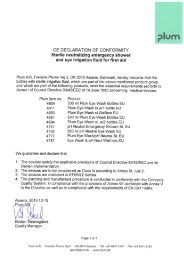OPERATING MANUAL - Bad Request
OPERATING MANUAL - Bad Request
OPERATING MANUAL - Bad Request
Create successful ePaper yourself
Turn your PDF publications into a flip-book with our unique Google optimized e-Paper software.
Safety regulations<br />
1.2 Product safety and dangers<br />
Incubators of the INCO type are technically well-developed, manufactured using high-quality<br />
materials and tested for many hours in the factory. They contain the latest technology and<br />
comply with recognised technical safety regulations. But there are still dangers involved, even<br />
when the appliance is used as intended. These dangers are described below.<br />
Warning!<br />
After removing covers, live parts may be exposed. You may receive<br />
an electric shock if you touch these parts. Disconnect the mains plug<br />
before removing any covers. Any work inside the unit may only be<br />
performed by qualified electricians.<br />
Warning!<br />
When loading the chamber with an unsuitable load, poisonous or<br />
explosive vapours or gases may be produced. This could cause the<br />
chamber to explode, and people could be badly injured or poisoned.<br />
The chamber may only be loaded with materials/test objects which<br />
do not form any poisonous or explosive vapours when heated up<br />
(see also Chapter 2.7 Intended use on page 14 ).<br />
Warning!<br />
Danger of suffocation. In high concentrations, CO 2 and N 2 can have<br />
a suffocating effect. In normal operation, the incubator gives off<br />
small amounts of CO 2 and – if equipped with the O 2 module – N 2<br />
to its environment. You should therefore ensure that the room in<br />
which it is installed is properly ventilated. If a gas bottle is not connected,<br />
or is empty, always close the stop valve or pressure reducer<br />
on the bottle.<br />
Warning!<br />
High concentrations of CO 2 can cause cold burns or frostbite. Avoid<br />
contact with CO 2 gas to the eyes and skin.<br />
Warning!<br />
CO gas bottles may burst or explode at high temperature. Do not<br />
2<br />
use naked flames in the vicinity of the gas bottles. Store gas bottles<br />
at lower than 50 °C in a well-ventilated location. Prevent water from<br />
penetrating, as well as backflow into the gas bottles. It is essential<br />
that you read the safety notes and regulations of the gas suppliers.<br />
CO and N are not dangerous substances in terms of the German Ordinance on Hazardous<br />
2 2<br />
Substances (GefStoffV). You should nevertheless familiarise yourself with the applicable safety<br />
regulations prior to handling such gas bottles.<br />
7


